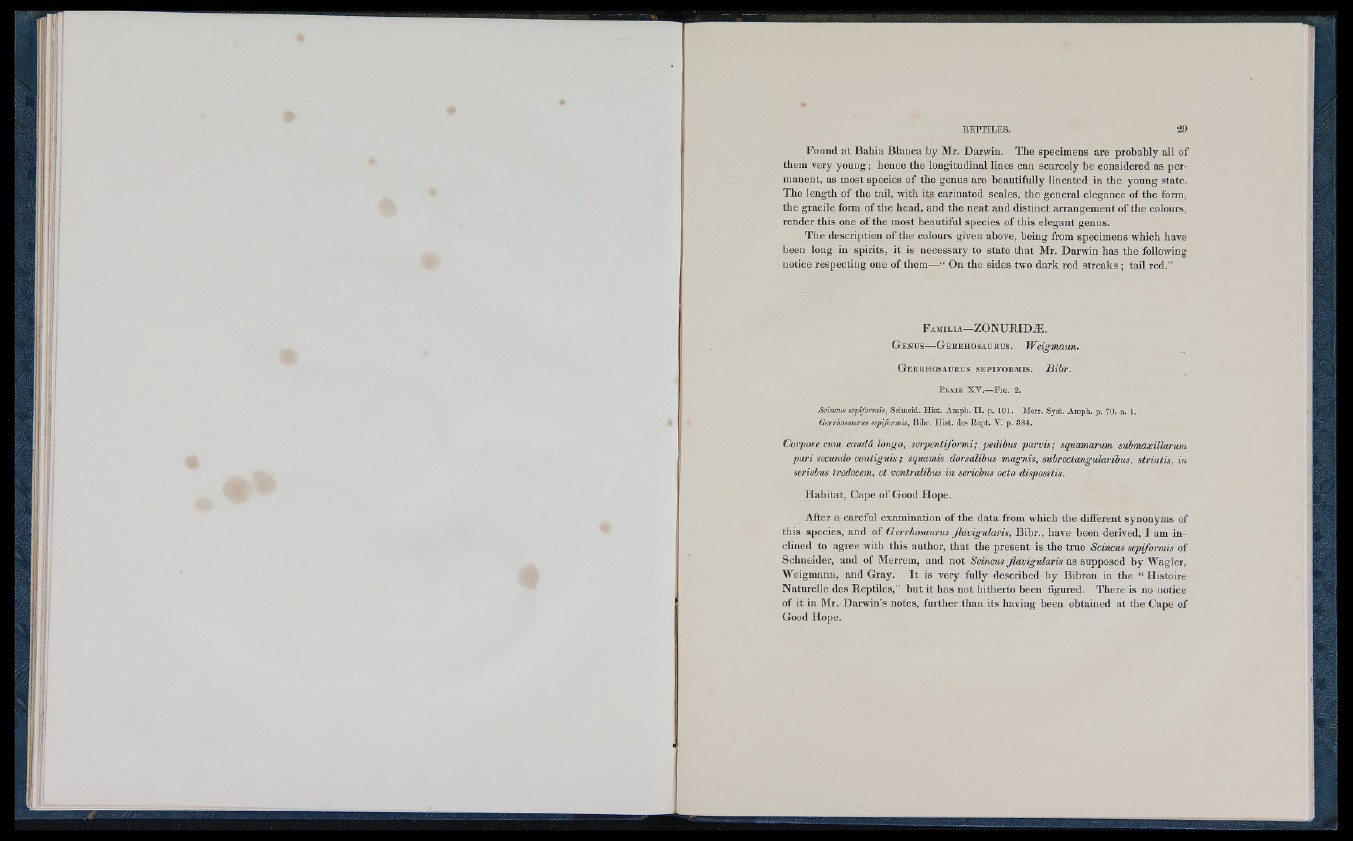
Found at Bahia Blanca by Mr. Darwin. The specimens are probably all of
them very young; hence the longitudinal lines can scarcely be considered as permanent,
as most species of the gemis are beautifully lineated in the young state.
The length of the tail, with its carinated scales, the general elegance of the form,
the gracile form of the head, and the neat and distinct arrangement of the colours,
render this one of the most beautiful species of this elegant genus.
The description of the colours given above, being from specimens which have
been long in spirits, it is necessary to state th a t Mr. Darwin has the following
notice respecting one of them—“ On the sides two dark red streaks ; tail red.”
F a m i l i a — ZONURIDÆ.
G e n u s— G e r r h o s a u r u s . Weigmann.
G e r r h o s a u r u s s e p i f o r m i s . Bibr.
st. Amph. p. 70. n. 1.
submaxillariim
■■s, striatis, in
P late X V .— F ig. 2.
Scincus sepiformis, Sclmcid. Hist. Amph. I I . p. 191. Merr. i
Gerrhosaurus sepiformis, Bibr. Hist, des Rept. V. p. 384.
Corpore cum caudâ longo, serpentiformi; pedibus parvis;
pari secundo contiguis ; squamis dorsalibus magnis, i
seriebus tredecem, et ventralibus in seriebus octo dispositis.
Habitat, Cape of Good Hope.
After a careful examination of the data from which the different synonyms of
this species, and of Gerrhosaurus jiavigularis, Bibr., have been derived, I am inclined
to agree with this author, that the present is the true Scincus sepiformis of
Schneider, and of Merrem, and not Scincus ftavigularis as supposed by Wagler,
Weigmann, and Gray. I t is very fully described by Bibron in the “ Histoire
Naturelle des Reptiles,” but it has not hitherto been figured. There is no notice
of it in Mr. Darwin’s notes, further than its having been obtained at the Cape of
Good Hope.